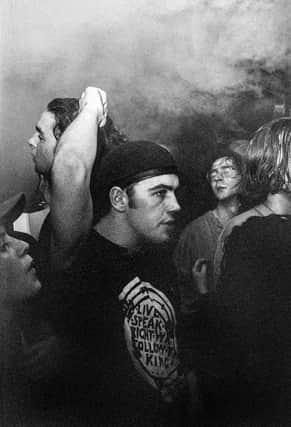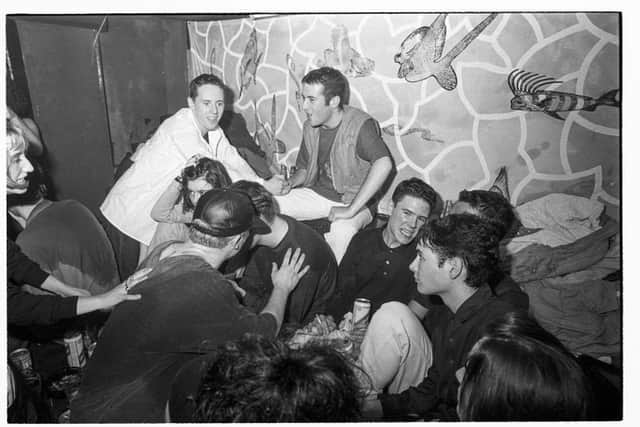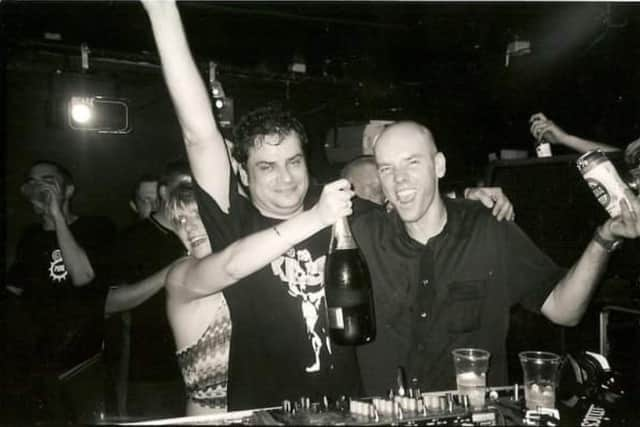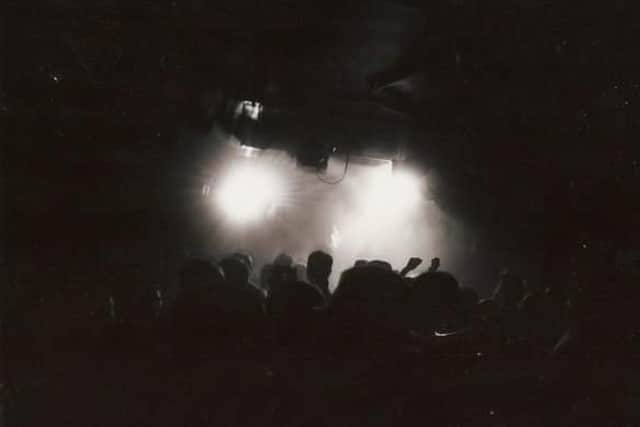Nightclubbing: The age of 1990s rave that found a natural home in Scotland


House and techno music that had been cooking away on the Continent and in cities like Chicago, New York and Detroit had already been filtering into Scotland thanks to those hungry for this fresh, modern sound and culture.
But by the ‘90s, dance culture went massive – and it was different to what had come before.


Advertisement
Hide AdAdvertisement
Hide AdClub nights transcended social divisions and brought people together in a new way. Aggro forged on the streets and in the football terraces of the 1980s gave way to something far more inclusive, positive and energised.
Keith McIvor, also known as DJ Twitch, was at the helm of legendary house and techno night Pure with compadre Andy Watson, known as DJ Brainstorm.
Held weekly at the Venue on Calton Road in Edinburgh, the night originally started in 1989 as UFO, where a club followed live bands and the sound was partly dictated by the demand for tunes by bands like Happy Mondays and Primal Scream.
UFO was shut down by police due to violence and from this Pure was born.


McIvor said: "Around this time, there was a lot of trouble with [football] casuals and the Hibs lot regarded the club as their territory.
"There was one night the Hearts lot came in and you could really feel this tension. There was some remark made and soon it was a scene from the Wild West.
"There were tables and chairs flying, me and Andy were cowering and very, very quickly a huge number of police had the place circled and broke it all up.
“I think it was the head of Lothian and Borders Police came in and said ‘this club cannot continue’. That was it, the end.


Advertisement
Hide AdAdvertisement
Hide Ad“That was when Pure started and we thought ‘we’re just going to play electronic music from all over the world’.
"For the first five or six years, Pure had this incredible energy, there were people from every possible background, every race, every sexuality.”
Ricky Magowan, promoter who set up the Streetrave parties with his friend James ‘Jamsy’ McKay, said the ‘casuals’ culture of hooliganism, which he was part of, gave way to the rave.
His life-long passion for making parties happen started at soul, jazz and funk nights at Club 9 in Motherwell – and then trips to the all-allowed Hacienda in Manchester.


Magowan said: "At the time, most places were ‘Sharon’ discos, but Club 9 was like a remnant of the Wigan Casino days. If it wasn’t for that club, there wouldn’t have been Streetrave.
“We were heading down to the Hacienda in Manchester at a time when a lot of DJs were still talking into the mic in Scotland. In England, they were mixing records the whole night through. Things were changing, the music was changing."
His first party at Ayr Pavillon was headlined by Hacienda duo Mike Pickering & Graeme Park. Around 900 people turned up, with British electronic group K-Klass later describing the nights in the old dance hall as like a "cauldron of energy … like walking into a lunatic asylum”.
All over Scotland, the map was erupting with sweatbox parties, from clubs in Aberdeen such as Fever at The Bang Club and Kia Aura at The Pelican to the Rhumba Club in Perth.
Advertisement
Hide AdAdvertisement
Hide AdIn Glasgow, UFO at Tin Pan Alley, Atlantis and Subculture at Sub Club and then, later, Pressure at The Arches were amongst the most influential. But there were hundreds, hundreds more.
No space was off limits for those wanting to party all night, with a safari park, forests, bothies, boats – and even an airport terminal all commandeered for the cause.
Magowan Streetrave crew took over Prestwick Airport for the first time in 1991. The airport was closed at the time, with the check in desks hoaching with dancing clubbers rather than holiday makers on nights where up to 5,000 clubbers converged.
Streetrave ended up doing six parties altogether, the last one on New Year’s Eve in 1993.
Magowan said: “Prestwick Airport was closed down at the time and they were needing money. This was before Glasgow Prestwick and EasyJet had happened. We did six parties in the end and the money we made them got the airport the rail link to Glasgow.
“When I walk into the terminal building, I still get the hairs on the back of my neck sticking up.”
At its heart of this new scene for many was the drug ecstasy – well documented for its ability to make users feel ‘loved up’ and completely in sync with music, surroundings and people.
Magowan said: “With the drugs situation, well, ecstasy changed everything. One million per cent, if it wasn’t for ecstasy these events wouldn’t happen.
Advertisement
Hide AdAdvertisement
Hide Ad"All of a sudden, you had people in the same room, people from different schemes, football hooligans and they were all getting on having a great time.
"There was one reason for that, it was ecstasy.
"That was the upside, but of course there was the down side, the deaths. These were the down, down times. But we can’t gloss over the role ecstasy had to play.”
Ecstasy deaths in Scotland started being recorded in 1996, with nine noted that year. There were two in 1997, three in 1998, eight in 1999 and 11 in 2000.
The party went dark in these tragic cases – but for many, the world just sounded wonderful back then.
A message from the Editor:
Thank you for reading this article. We're more reliant on your support than ever as the shift in consumer habits brought about by Coronavirus impacts our advertisers.
If you haven't already, please consider supporting our trusted, fact-checked journalism by taking out a digital subscription.
Comments
Want to join the conversation? Please or to comment on this article.